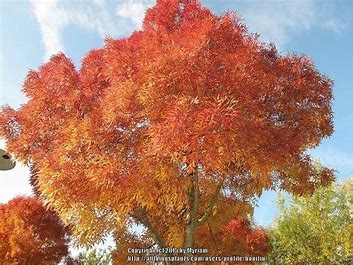Welcome to Fall!
It's my favorite season and likely for many of you, as well. Beyond the holidays and extra time with family and friends, nature radiates its beautiful hues. In addition to lovely foliage, deciduous trees often expose exquisitely shaped and sturdy trunks. And, of course, there is the lovely fall foliage showcased by many species.
Did you ever wonder why trees "turn" color in the fall? The short answer: It's primarily a function of long, cool fall nights and short, sunny days. The longer answer? Chlorophyll is responsible for the basic green color of leaves we see in spring and summer and is a necessary component of photosynthesis, which uses sunlight to manufacture sugar (food) that is stored during the dormant period of the year. Carotenoids produce yellow, orange and even brown pigments in crops such as carrots, squash, bananas and many ornamental plants such as daffodils and poppies. Anthocyanins are red and orange in color and are most linked to lavish displays of brilliant fall foliage. They also give rise to coloring of strawberries, plums and cherries.
Here's the kicker: While chlorophyll and carotenoids are present in leaf cell chloroplasts throughout the entire growing season, during fall chlorophyll begins to break down. Voila! The lovely yellow and orange hues we all look forward to seeing are finally exposed. In addition, red hues (called anthocyanins) are produced in fall. So, in reality foliage doesn't "turn" orange or red at all.
Interestingly, the actual timing of color change varies across species and appears to be genetically inherited. The same species will exhibit a similar color scheme in cool temperatures in higher elevations at nearly the same time as it does in warmer lower elevation climates.
The intensity of color can vary quite a bit however. Where do temperatures enter the picture? Both the amount of color and the overall intensity of fall color is very linked to weather conditions that occur prior to and during the actual time the chlorophyll in leaves winds down. The most brilliant displays occur after several warm, sunny days and cool, crisp (above freezing) nights. This is because although lots of sugars are made in leaves during sunny daytime hours, the corresponding cool nights prevent the sugars from moving out. The amount of soil moisture also helps ensure that from year to year fall colors vary even in the same trees. So, either a late spring or a prolonged drought can both delay the display of fall color by a few days or even a few weeks.
What's the recipe for the most brilliant fall display? Most likely a warm, moist spring followed by a warm summer and sunny fall with cool autumn nights. Although fall color is not nearly as spectacular in lower elevations of Southern California compared to other colder areas of the nation, the liquidambar or American sweet gum (Liquidambar styraciflua) offers some pretty impressive fall color and an impressive 300 to 400-year life span. (Did you know that liquidambar got its name because it at one time was a sought-after chewing gum for Native Americans?)
Two “climate-ready” tree species with lovely fall foliage that grow in both the west portion of the county and the desert are the ‘Keith Davey' Pistache, a large street and park tree sporting crimson to scarlet colored foliage and its relative, the ‘Red Push' Pistache, a hybrid between P. atlántica x P. integerrima) which has lovely red foliage as it emerges in Spring as well as Fall. Others include the Raywood Ash (Fraxinus oxycarpa 'Raywood') sporting a reddish-purple hue in the fall, and the ‘Sunburst' Locust (Gleditsia triacanthos var. inermis 'Sunburst') which offers a vivid display of fall color. Unfortunately, it is susceptible to the Invasive Shot-Hole Borer. If you have one of these lovely trees already, take good care of it to help it stand up to this aggressive pest!
Happy Fall! Enjoy the cooler weather, family and friends, and lovely trees!
Attached Images:
